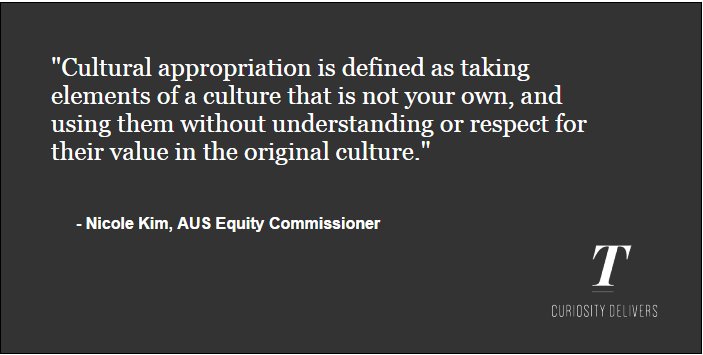On Friday, Oct. 29, the Arts Undergraduate Society (AUS) held a forum in the Arts Lounge on the topic of cultural appropriation in Halloween costumes. Led by AUS Vice-President (VP) External Becky Goldberg, as well as Equity Commissioners Kelsa Ferguson and Nicole Kim, the forum aimed to shed light on many elements surrounding cultural appropriation, including why it happens, how it happens, and what those involved in it can do to try to understand and reduce it.
“The biggest issue has been the lack of cultural sensitivity people display at Halloween, and the tendency for people to act on predetermined assumptions and stereotypes of marginalized identities for the sake of celebration,” Kim said.
The event began with a discussion on the differences between cultural appropriation, cultural exchange, and cultural imposition.
“Cultural appropriation is defined as taking elements of a culture that is not your own, and using them without understanding or respect for their value in the original culture,” Kim explained.
According to Kim, the concept of cultural exchange is more difficult to define.
“For something to be [a] true cultural exchange, there has to be an element of mutual understanding, equality and respect,” she said.
Cultural imposition is defined as the tendency of a person or group to impose their values and behavious onto other persons.
The forum continued with a showing of a video by Amandla Stenberg, a 17-year-old actress best known for her portrayal of Rue in the Hunger Games films, titled Don’t Cash Crop My Corn Rows: A Crash Discourse on Black Culture. Stenberg explains in the video the harm that can come from cultural appropriation, using the example of the corn row hairstyle.
“Hair has always been an essential component of black culture,” Stenberg said. “Corn rows are a really functional way of keeping black textured hair unknotted and neat [….] Braids and corn rows are not merely stylistic.”
Stenberg explained that celebrities like Kylie Jenner wearing corn rows is cultural appropriation because it disregards their original purpose and treats them as something shallow.
The forum then moved onto a discussion of Halloween costumes, focusing significantly on costumes that misrepresent aboriginal cultures. The discussion revolved around topics like how one would approach a six-year-old child wearing a Pocahontas costume to explain that it is offensive and damaging.
According to Alex Lavkulik, U4 Education, a lack of education surrounding cultural sensitivity is responsible for ppropriation in Halloween costumes.
“Maybe it’s not as clear or obvious to other people, but dressing up as a Native American trivializes their culture, and is equally offensive as dressing up as someone of another race,” Lavkulik said.
The discussion closed with an explanation of how to determine if a costume is culturally appropriative. AUS VP Social Christine Koppenaal, outlined criteria that should be met to determine if a costume is culturally appropriative or not.
“Does your costume: A. Mock or condescend historically oppressed people and/or cultures; B. Include painting one’s face to match the skin colour of a specific person/people; C. Incorporate sanctified objects [or] clothing of others’ cultures, [or] D. Caricature oppressive, historical and/or current conditions of marginalized groups or persons in a way that may serve to trivialize them,” Koppenaal said.
If an individual answers “yes” to any of these questions, the AUS reccomends that the costume not be worn.
According to Kim, the forum reflected an increased awareness of cultural appropriation at McGill.
“Obviously, there is always more progress to be made, but McGill’s student body has been effective in holding each other accountable and reducing the relative ‘cool factor’ of dressing up in culturally appropriative ways,” Kim said.








